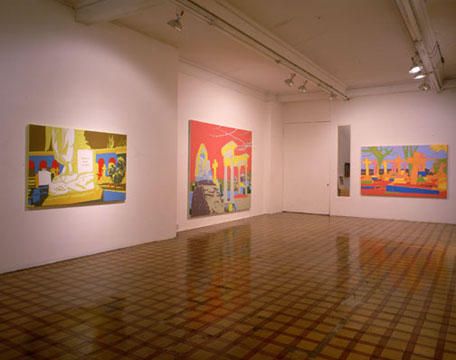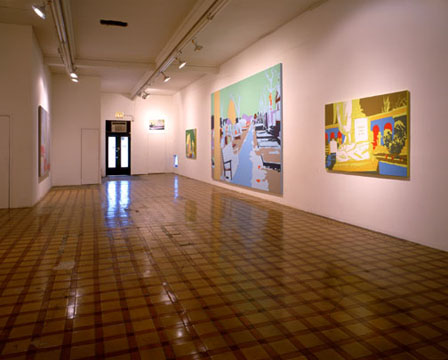Press Release
Leo Koenig Inc. is pleased to announce a solo exhibition of new paintings by Lisa Ruyter.
These paintings are made from photographs taken by the artist in cemeteries including Brompton Cemetery in London, Pere Lachaise in Paris, Boothill Graveyard in Tombstone Arizona and Hope Cemetery in Barre, Vermont–a kind of travelogue about space and time.
Ruyter has titled the show “Imitation of Life,” referencing the 1959 melodrama by Douglas Sirk. Ruyter identifies with Sirk’s use of recycled material and genre structure to exploit the complexity of representation. Sirk relied on an earlier and more classical model (the first “Imitation” made a fortune for Universal in the 30’s) using bright Technicolor saturation and mannerist compositions to distort his narrative plane. Ruyter, who would have you believe that painting is her genre, shoots and paints, acknowledging the impossibility of depicting reality without a formalist safety net, without a dialogue of antecedents. The relationship between formalist concerns and a living content are at the heart of her work.
The naming of this show after a film echoes Ruyter’s practice of titling her paintings from a list of movies. This strategy encourages a reading that places her work within a broader cultural history of image-making. The importance of the photographic source material is evident. Ruyter stresses the act of taking photographs, of having been there, of collecting imagistic fragments of her own biography.
All of these paintings have a particular subject matter in common. The space created in them is specific to each individual work. These paintings are about intentionality, about the use of style as a willful act. If the source photos had an immediate quality to them, the paintings betray any illusions of casualness in the photo. The cruelty of the camera angle, the sadism of the cropping become evident. Ruyter utilizes style and artifice to create works that affect the viewer as being more real, more deliberate.
In sharp contrast to a painting-specific understanding of formalism as a neutralizing and meaning-stripped venture, Ruyter re-posits formalist approach as a deliberate and conscious act. The artist visually relates her story, manipulating content through formal intercessions, an idea very familiar to students of film and photography. The fact that Ruyter stages these constructions in cemeteries reinforces the connection of art to the commemorative. These paintings are glimpses of the infinite authored by a human hand.
Lisa Ruyter has exhibited extensively in Europe as well as the U.S. Her work has most recently been seen at the Whitney Museum at Philip Morris in the exhibition “Pastoral Pop,” and in PS 1’s “Greater New York.” She lives and works in New York City.

